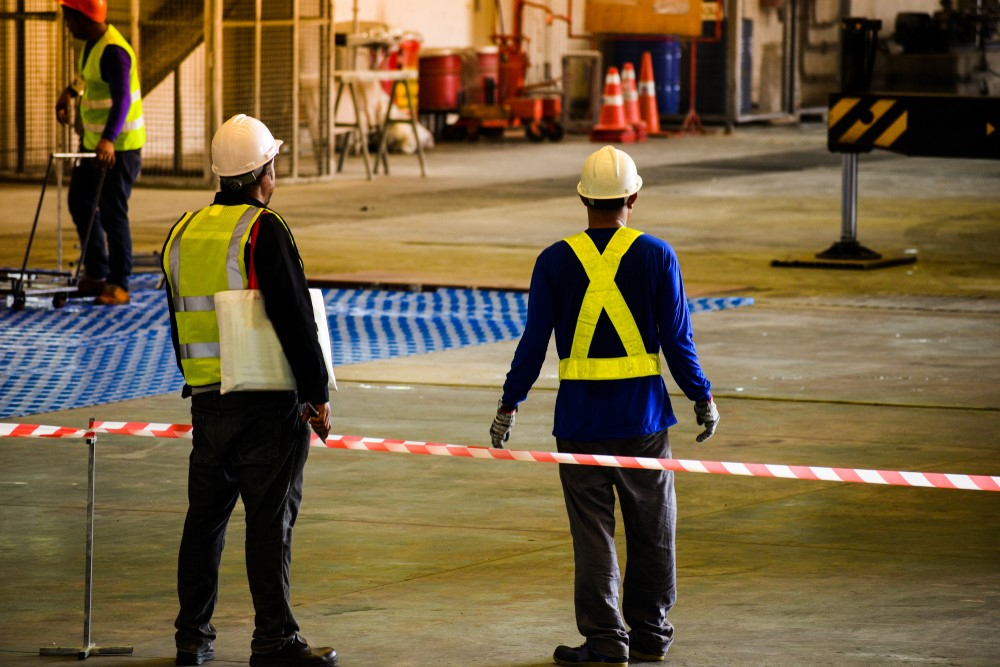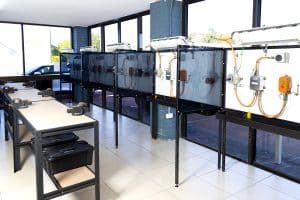The smart Trick of Roar Solutions That Nobody is Discussing
The smart Trick of Roar Solutions That Nobody is Discussing
Blog Article
Our Roar Solutions PDFs
Table of ContentsFascination About Roar SolutionsThe Facts About Roar Solutions UncoveredSome Known Incorrect Statements About Roar Solutions
In order to safeguard installations from a potential surge a technique of analysing and classifying a possibly unsafe area is called for. The function of this is to guarantee the correct option and setup of tools to eventually avoid an explosion and to make certain security of life.
(https://www.bitchute.com/channel/JJyNq2gAk2M7)
No devices should be set up where the surface temperature level of the equipment is higher than the ignition temperature of the provided hazard. Below are some typical dirt hazardous and their minimum ignition temperature level. Coal Dirt 380C 225C Polythene 420C (thaws) Methyl Cellulose 420C 320C Starch 460C 435C Flour 490C 340C Sugar 490C 460C Grain Dust 510C 300C Phenolic Material 530C > 450C Aluminium 590C > 450C PVC 700C > 450C Soot 810C 570C The possibility of the threat existing in a concentration high adequate to trigger an ignition will certainly vary from location to area.
Dangerous area electric equipment possibly designed for usage in greater ambient temperature levels. Field Repair Work By Authorised Personnel: Complicated screening might not be called for nevertheless specific procedures might require to be adhered to in order for the tools to preserve its third party rating. Each item of tools with a hazardous rating ought to be evaluated independently.
The smart Trick of Roar Solutions That Nobody is Discussing
The equipment register is a comprehensive data source of devices records that consists of a minimum set of areas to identify each product's location, technical parameters, Ex lover classification, age, and environmental information. This info is essential for tracking and managing the equipment properly within dangerous locations. In contrast, for routine or RBI sampling examinations, the grade will certainly be a combination of Thorough and Close evaluations. The proportion of Comprehensive to Shut inspections will certainly be determined by the Tools Risk, which is analyzed based on ignition danger (the probability of a resource of ignition versus the probability of a combustible ambience )and the harmful location classification
( Area 0, 1, or 2). This variant will also affect the resourcing needs for work prep work. When Lots are specified, you can establish sampling strategies based upon the example size of each Whole lot, which refers to the number of random devices products to be evaluated. To figure out the called for sample size, two facets need to be assessed: the dimension of the Whole lot and the category of inspection, which suggests the degree of initiative that ought to be applied( lowered, typical, or increased )to the assessment of the Whole lot. By integrating the group of evaluation with the Great deal dimension, you can then develop the appropriate being rejected criteria for an example, meaning the allowable number of faulty items found within that sample. For more details on this procedure, please describe the Energy Institute Guidelines. The IEC 60079 basic advises that the optimum period between assessments must not exceed 3 years. EEHA assessments will likewise be carried out outside of RBI campaigns as part of scheduled upkeep and tools overhauls or repairs. These assessments can be attributed towards the RBI example dimensions within the influenced Whole lots. EEHA inspections are carried out to identify faults in electrical tools. A weighted racking up system is vital, as a solitary tool may have multiple faults, each with differing levels of ignition risk. If the consolidated rating of both examinations is less than twice the fault score, the Whole lot is regarded appropriate. If the Whole lot is still considered inappropriate, it has to undergo a full assessment or justification, which might set off more stringent evaluation protocols. Accepted Whole lot: The sources of any faults are identified. If an usual failure setting is discovered, added equipment may require maintenance. Mistakes are identified by seriousness( Safety, Stability, House cleaning ), making sure that urgent concerns are evaluated and dealt with immediately read this post here to alleviate any type of influence on security or procedures. The EEHA database should track and tape the lifecycle of mistakes together with the corrective activities taken. Implementing a robust Risk-Based Inspection( RBI )approach is essential for making certain conformity and safety and security in managing Electric Devices in Hazardous Areas( EEHA) (hazardous area course). Automated Mistake Rating and Lifecycle Management: Easily take care of faults and track their lifecycle to improve examination precision. The intro of this assistance for risk-based evaluation even more enhances Inspectivity's setting as a best-in-class remedy for regulative conformity, in addition to for any kind of asset-centric evaluation usage situation. If you want discovering more, we invite you to request a presentation and uncover exactly how our remedy can change your EEHA management procedures.
The Ultimate Guide To Roar Solutions

In terms of eruptive risk, a harmful area is an environment in which an explosive ambience is existing (or may be expected to be existing) in quantities that require special preventative measures for the construction, setup and use equipment. eeha. In this article we check out the obstacles encountered in the workplace, the threat control steps, and the required expertises to work securely
These compounds can, in certain problems, form explosive ambiences and these can have major and tragic repercussions. Many of us are acquainted with the fire triangular remove any one of the three elements and the fire can not happen, but what does this mean in the context of dangerous areas?
In a lot of circumstances, we can do little concerning the degrees of oxygen airborne, however we can have considerable impact on resources of ignition, as an example electric tools. Unsafe areas are documented on the hazardous area classification drawing and are determined on-site by the triangular "EX LOVER" indication. Right here, among other crucial info, areas are split into three types depending upon the danger, the probability and period that an eruptive environment will certainly exist; Zone 0 or 20 is deemed the most dangerous and Zone 2 or 22 is deemed the least.
Report this page